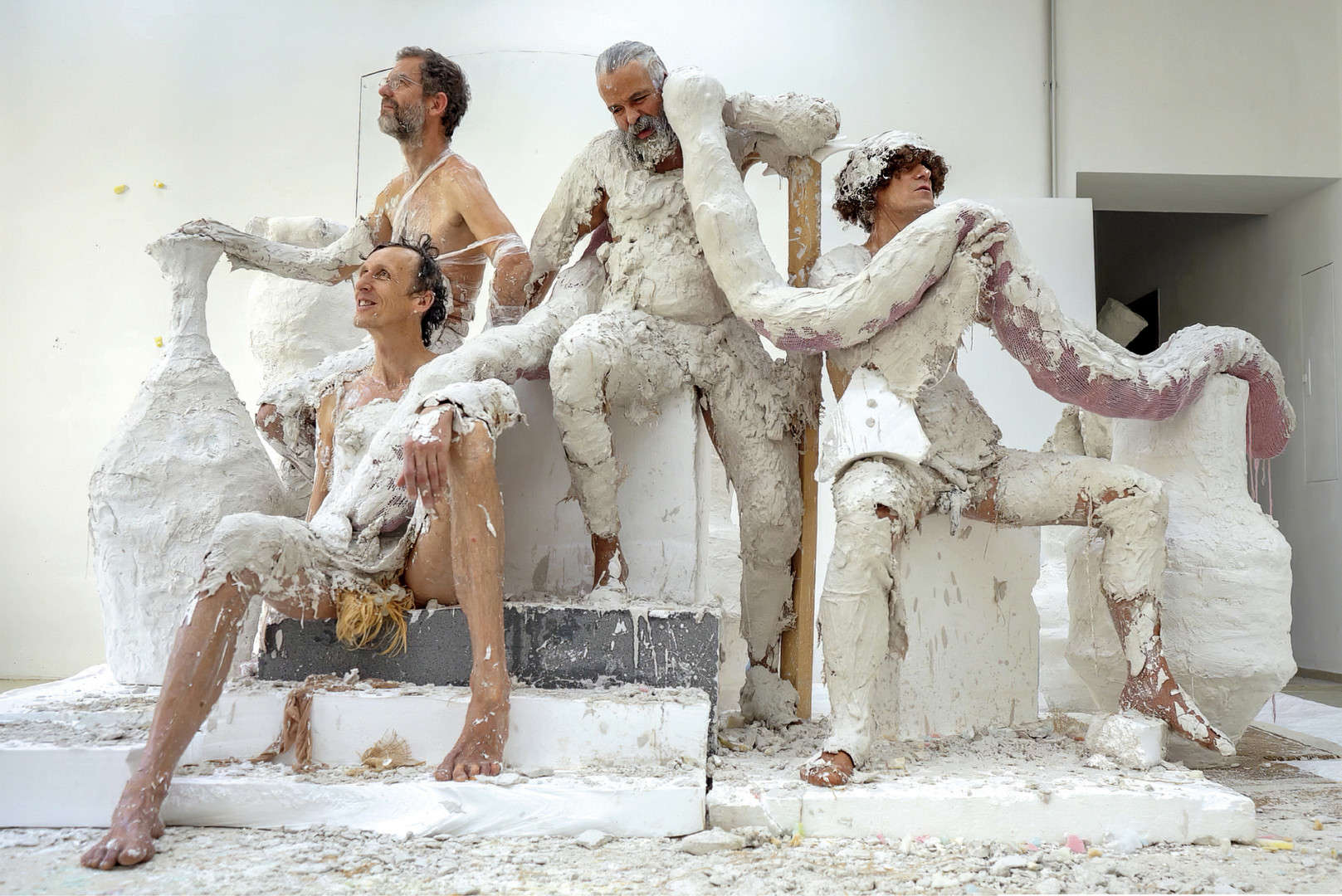From Oct. 2, 2024 to June 30, 2025, FOROF, an exhibition space in Rome that combines contemporary art and archaeology, will host Nimbus Limbus Omnibus, a new site-specific project by the Austrian collective Gelitin/Gelatin. The group, composed of Wolfgang Gantner, Ali Janka, Florian Reither and Tobias Urban, proposes a dialogue between ancient and contemporary, reflecting on the theme of “liberation” through a monumental installation curated by Bartolomeo Pietromarchi.
Nimbus Limbus Omnibus takes its cue from the Roman rite of “manumissio,” the ceremony of freeing slaves that took place in the eastern apse of the Basilica Ulpia (2nd century AD), the ruins of which can be seen today in FOROF’s basement. The title of the exhibition evokes a ritual formula, emphasizing the transition to a state of personal and collective freedom, a concept central to Gelitin’s poetics. The group conceived the installation as a kind of ritual or procession, inspired by the enigmatic and suggestive title, which seems to evoke an ancient magical formula or ritual: “the title,” suggests curator Pietromarchi, “can be interpreted as the moment when each of us (omnibus) is in a state of transition, an indefinite passage like an ethereal cloud (nimbus) or a boundary (limbus), which in the artists’ vision refers to the liberating power of their art from conventions, prejudices and taboos, both on an individual and collective level.”
The installation is developed in two parts. The first part recreates a large repository, with sculptures and objects collected by the artists over more than 25 years that form a kind of memory archive. Reclaimed materials and assemblages compose a path underground reminiscent of Roman catacombs, with dozens of pieces arranged as relics of a past in continuous dialogue with the present. In the second part, the remains of the pavement of the Basilica Ulpia house some sculptures from 2019, exhibited for the first time in Italy. These busts, with two napes reflected in each other, reinterpret classical Roman sculpture in a contemporary key, offering a reflection on the concept of transformation and duality.
The exhibition will be inaugurated with a special ceremony, during which visitors will be able to taste sweets prepared by the artists in collaboration with Rimessa Roscioli, served on a ten-meter table. Parallel to the installation, FOROF will publish a bilingual monographic catalog dedicated to Gelitin/Gelatin, which will include unpublished material and critical insights. In addition, a Public Program of multidisciplinary events will be activated, with performances, talks and musical interventions to explore the themes of the exhibition.
Gelitin/Gelatin is an art collective formed by Wolfgang Gantner, Ali Janka, Florian Reither and Tobias Urban. The four first met at a summer camp in 1978, but did not officially begin exhibiting their work until 1993. Currently, they live and work in Vienna, Austria. Their work ranges across different mediums of expression, including performance, installation, sculpture and new media. Despite this formal variety, their works share a common goal: to challenge the traditional relationship between the artwork and the audience. They often involve viewers in the creation of the work, turning them into co-creators rather than leaving them mere observers. In some cases, their art practice even includes the destruction of the work itself, exploring the fine line between creation and destruction. The collective is known for its bold and playful approach, combining social critique and experimentation.
Gelitin/Gelatin have participated in numerous international biennials and exhibitions, including Manifesta 11, the Aichi Triennial in Japan, the Moscow and Gwangju Biennials, as well as the Venice Biennale in 2001, where they represented Austria. Their works have been exhibited in prestigious museums such as MoMA PS1 in New York, Musée d’Art Moderne de Paris and Palais de Tokyo in Paris, as well as in numerous museums in Austria and other countries.
Image: portrait of the Gelitins. Photo: Christian Harringer
 |
| Rome, Gelitins bring to FOROF a project inspired by liberation in ancient Rome |
Warning: the translation into English of the original Italian article was created using automatic tools. We undertake to review all articles, but we do not guarantee the total absence of inaccuracies in the translation due to the program. You can find the original by clicking on the ITA button. If you find any mistake,please contact us.